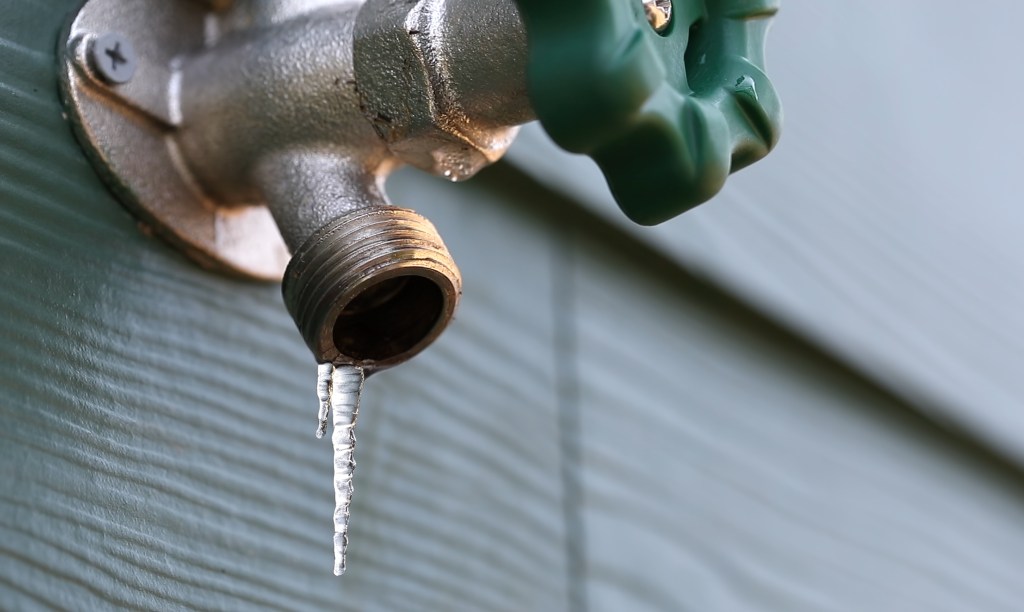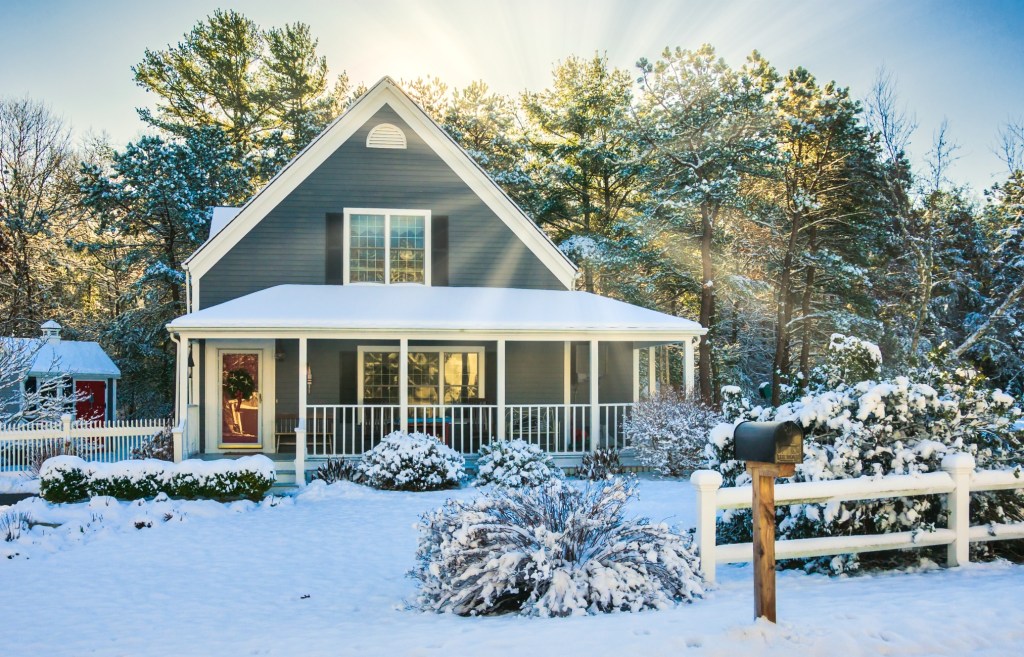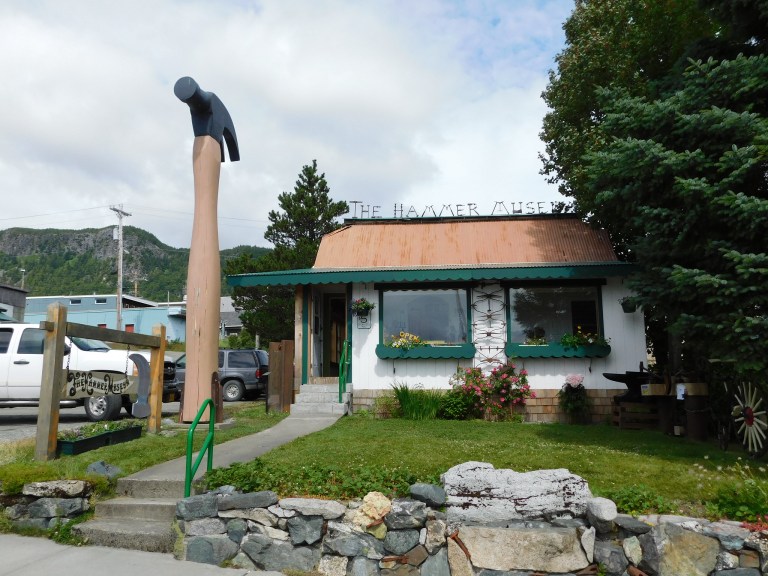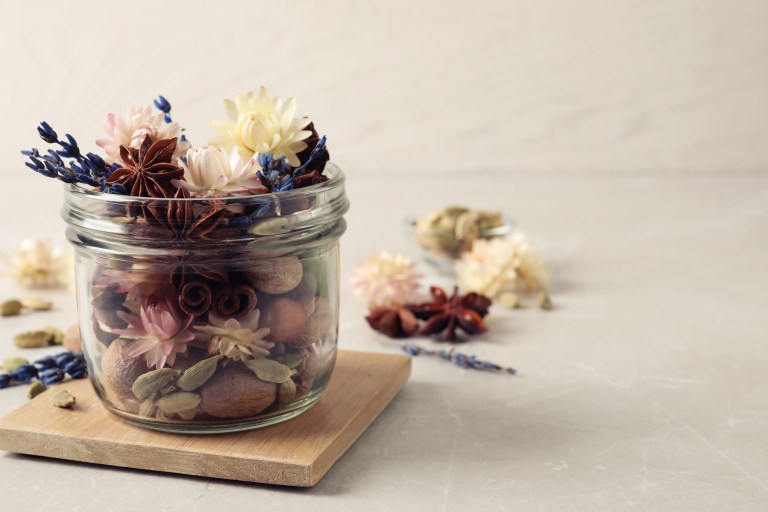Time to bust out the fuzzy slippers and stock up on hot chocolate fixins’, winter is just around the corner. And since it’s the season for spending time indoors, you’ll also want to make sure your home is set up to keep you cozy through the cold months.
Winterizing your place isn’t just about staying toasty, though — it can also save you money and prevent damage.
“An intense winter can be a huge stressor (and a financial shock) for homeowners if their spaces are unprepared for the change in temperature,” home improvement expert Anthony Carrino told Men’s Journal, adding: “It’s essential to be proactive and take some critical steps to prepare your home to keep your family warm and safe.”
Keep reading to learn some key ways to prepare your home for winter.
Keep the Warmth Indoors
Seal gaps: According to the U.S. Department of Energy, about 30% of a home’s heating is lost through windows, so identify any gaps, and then seal them up using weatherstripping or caulk. Tip: Move a lit candle slowly around your windows’ seams to pinpoint where a draft is coming from. If the flame flickers, you found the culprit. Draft stoppers are great options for blocking openings between your doors and floors.
@lowes Check your home for drafts in one minute or less ⏰ #homehack #homeimprovement #winter
♬ original sound – Lowe’s
Service your heating system: You’ll definitely need your HVAC system to be in working order for winter, so consider calling a professional for an inspection — sooner rather than later. “The colder it gets, the busier the most qualified HVAC technicians become with appointments. So don’t wait until it’s too late,” Carrino said. At the very least, make sure you change out the air filter to help the system run more efficiently.
Adjust your ceiling fan settings: Did you know your ceiling fan can help warm your home? In the winter, fans should rotate clockwise to pull warm air from the ceiling and circulate it around the room. In the summer, they should turn counterclockwise to create a downdraft. Nearly all ceiling fans have a switch or pull chain on the base that will change the direction it turns. If you’re unsure which way the blades are spinning, stand underneath; a strong breeze indicates it’s going counterclockwise.
Prevent Frozen Pipes
Insulate: Exposed pipes — especially those in colder, unheated areas like basements and attics — are particularly susceptible to freezing and bursting, one of the most common causes of property damage during the winter months, per the Insurance Institute for Business and Home Safety, or IBHS. Luckily, it’s easy and inexpensive to wrap them with some foam insulation.
“Pipe insulation can cost as little as 50 cents per linear foot at your local hardware store,” Sarah Dillingham, an IBHS spokesperson, told Consumer Reports. “For a weekend’s worth of time, you can reduce the headache of time-consuming cleanup and costly water damage repairs and avoid the heartbreak of losing cherished possessions.”

Identify your home’s main water valve: If a pipe does burst, you’ll need to turn your water off immediately, so make sure you know where that main valve is now.
Drain outdoor faucets: Before freezing temps set in, drain any outdoor water spigots that you don’t plan to use during the winter. Learn how here.
Get more tips for preventing frozen pipes.
Ready Your Roof and Gutters
Clean the gutters: Your gutters redirect rain and melted snow off of your roof and away from the sides and foundation of your home, preventing mold, mildew, and other water damage. If they’re filled with leaves and other debris, they can’t do that job, so a good autumn cleaning is essential.
For most people, clearing the gutters biannually — after the leaves change in fall and then again in the spring — is enough, but if you live in a particularly wooded area or just have a lot of leafy trees in your yard, you may need to do so every three months, per Architectural Digest. Find out how.
Inspect the roof: Check for loose or missing shingles — either yourself, if you can do so safely, or by hiring a professional to take a look. Make any necessary repairs before the first snow to avoid leaks.
Prepare and Protect Your Yard

Mulch your plants: Per Southern Living, you can “think of mulch like a blanket protecting the garden during the winter months.” The outlet recommends applying a 3-inch to 5-inch layer after the first hard freeze. Get more ideas for protecting your plants.
Trim trees: Dead branches can easily snap off from a snowfall and go flying in the wind, potentially endangering humans and your home. Assess the yard and trim your trees while it’s still nice out, or hire a landscaper or arborist to do so for you.
Stay Safe
Build an emergency kit: Strong storms can knock out power lines and heavy snow can keep people stranded at home. Hope for the best and prepare for the worst by creating an emergency kit with flashlights, batteries, blankets, water, non-perishable food, and backup pet food if you have animal companions. It’s a good idea to keep a similar kit in the car as well.
Carbon monoxide detectors: It’s essential that your carbon monoxide detectors are working properly, especially if you use a fireplace or space heater. Test the detectors before you start making nightly fires or blasting the heaters.
Backup power: Consider purchasing a generator for long outages.
RELATED: Snow Day Survival Guide: 19 Products to Make the Most of the Winter Weather











